Despite being a fairly small nation, Iceland has produced some iconic footballers over the years. The most famous player to descend from Icelandic shores is probably Eidur Gudjohnsen, who made over 180 appearances for Chelsea and went on to win the Champions League with Barcelona.
Currently, there are some incredibly talented young Icelandic players who are playing their football both in the Besta deild karla and abroad. For example, Hákon Haraldsson recently signed for Ligue 1 side Lille and Orri Óskarsson is making a name for himself at FC København.
In this tactical analysis scout report, we will highlight two potential future stars from Iceland. We will analyse their individual styles of play and assess their key attributes in addition to dissecting the impact both players have upon their team’s respective tactics.
Egill Otti Vilhjálmsson
Egill Otti Vilhjálmsson is a 19-year-old attacking midfielder who has been putting in some impressive performances for Fram U19s recently. Whilst he mostly plays as a CAM in the ‘number 10’ role of a 4-2-3-1 system, he can also play as a winger, giving him some versatility that could be useful in the future.
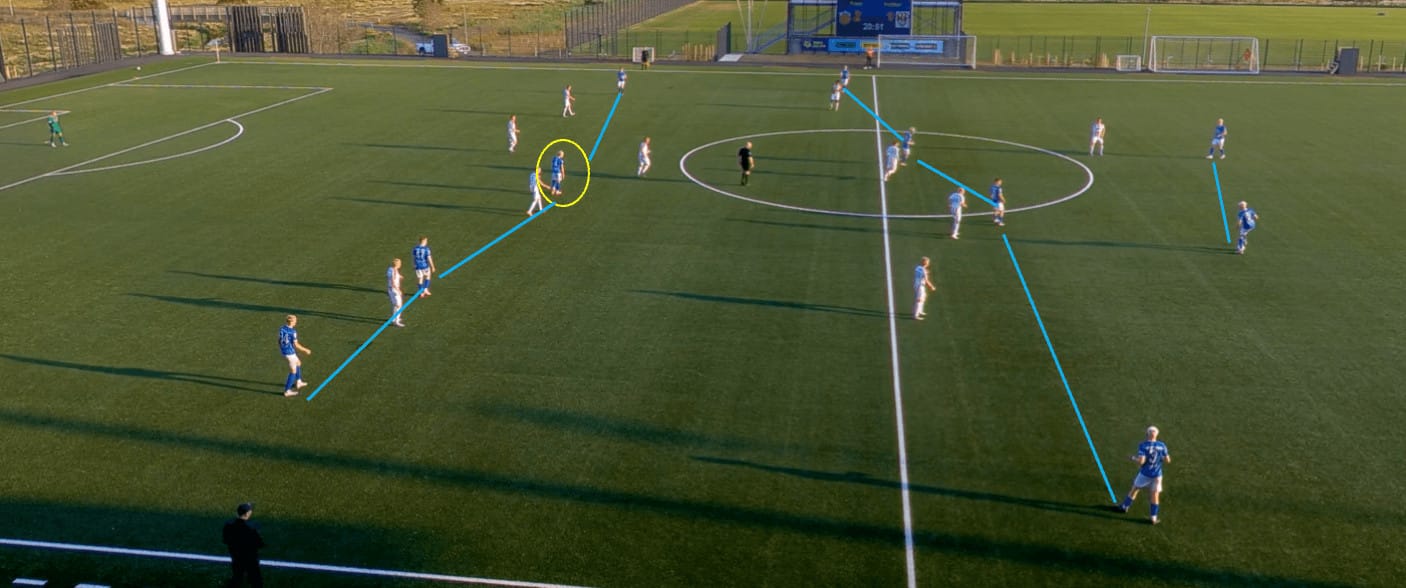
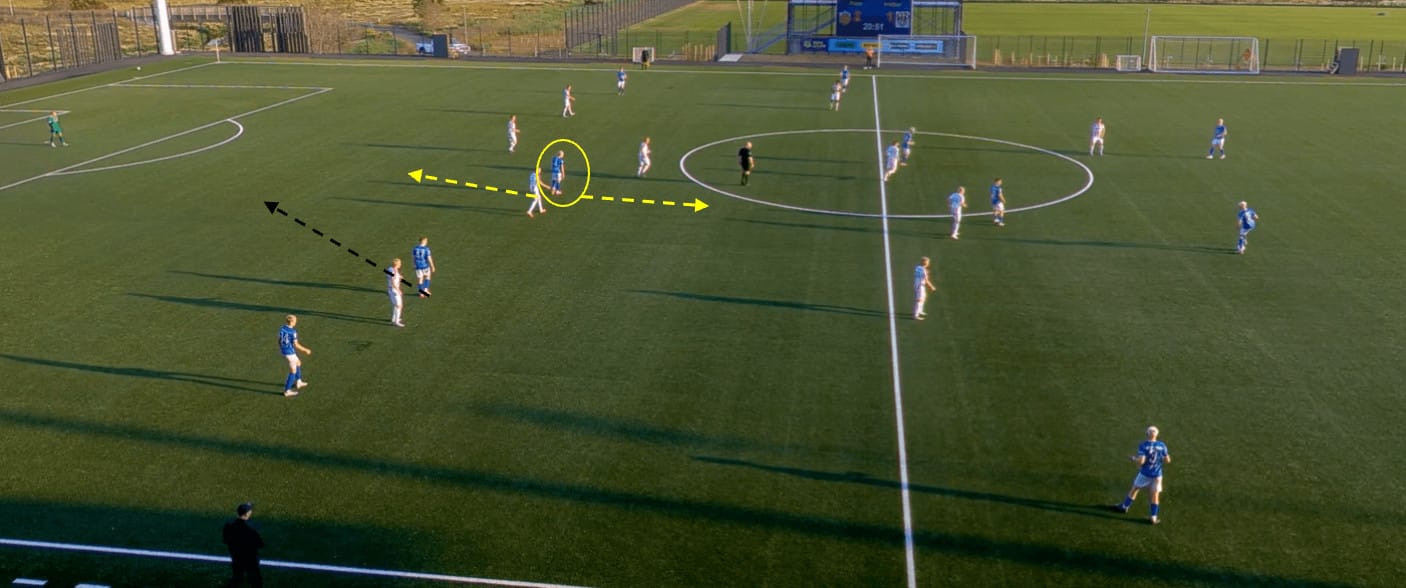
Fram U19s typically build up in a 2-4-4 shape, as demonstrated above. Vilhjálmsson usually occupies the central position in the front four. The attacking midfielder will quite often look to drop deeper and drag defenders with him, creating spaces for fellow attacking players to make runs in behind. Alternatively, he will make runs in behind himself, which stretches the opposition’s defence and gives his teammates options to play long passes or utilise the space created by his movements to play in other Fram U19 players.
The Icelandic attacking midfielder’s dynamic movements play a crucial role in disrupting the opposing team’s defensive structure. The defenders are still determining whether to mark the midfielder or hold their positions, which often leads to defensive errors and miscommunications. This confusion frequently results in gaps opening up within the defence, which Fram U19s can quickly exploit to their advantage, increasing goalscoring opportunities.
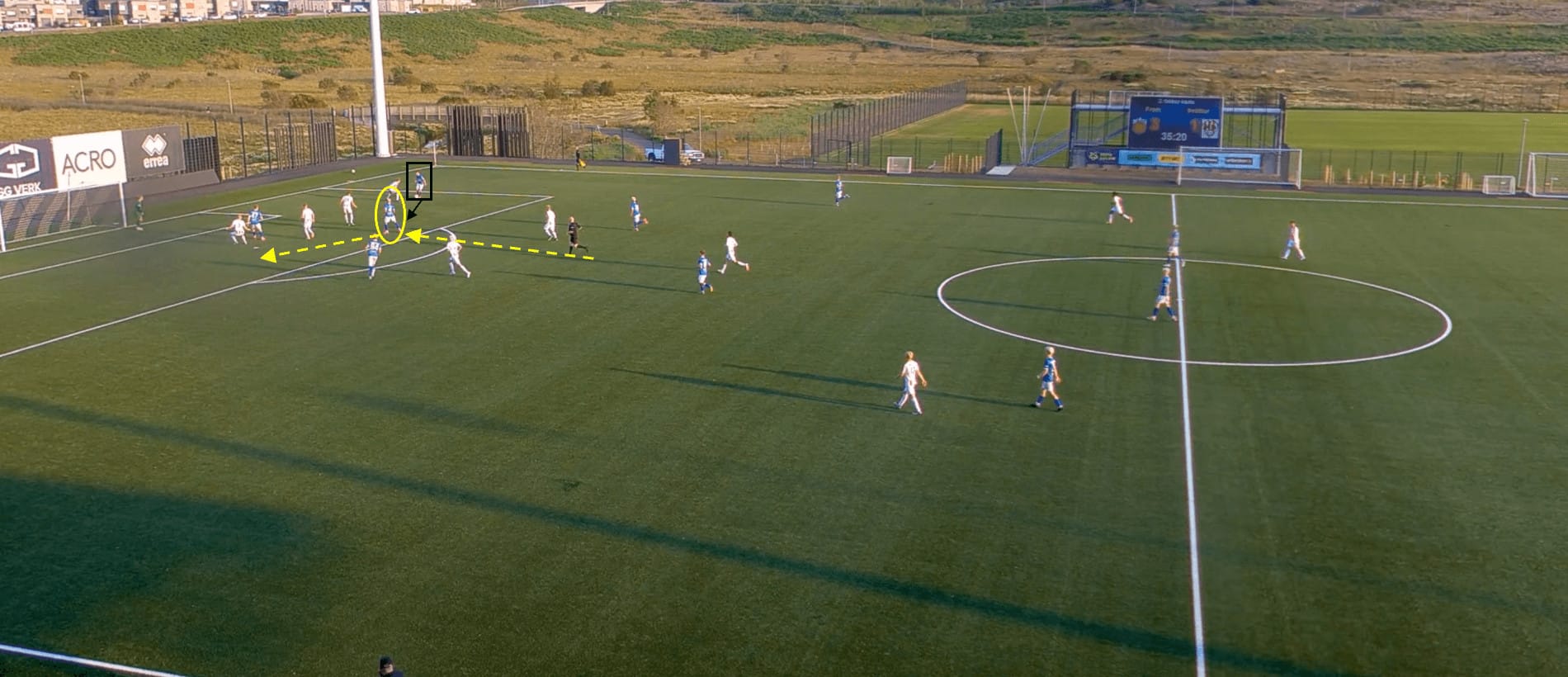
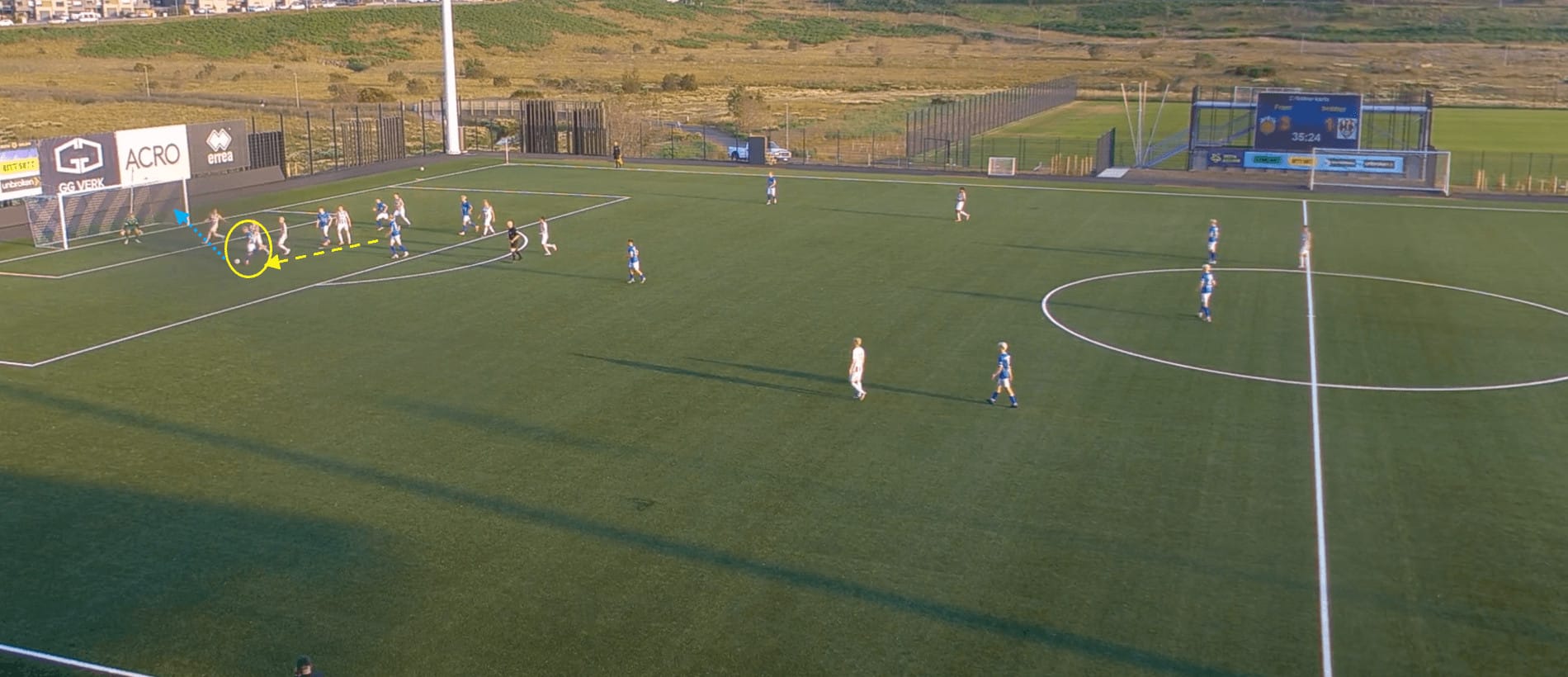
Vilhjálmsson possesses the ability to get into some very prominent goalscoring positions. He times his runs into the penalty area to perfection, which sees him drift into pockets of space even when there are several teammates and opposition defenders occupying the area.
We can see in this example that he makes one of these runs into the area as Fram U19 are building an attack down the right flank. Vilhjálmsson uses his body orientation and close control to prevent the opposition defenders from stealing possession as he receives the ball. He then carries the ball away from the defenders and executes a driven shot into the corner of the goal.
Vilhjálmsson’s capability to infiltrate the opponent’s penalty area provides an additional threat that the opposition must deal with. This creates more issues for the opposition defence as they must decide who is going to mark the attacking midfielder, which can lead to some indecisiveness. Additionally, Vilhjálmsson’s adeptness at positioning himself strategically and seizing goalscoring opportunities means that he can act as a pivotal link between the midfield and the forward line, contributing significantly to the team’s goal tally.
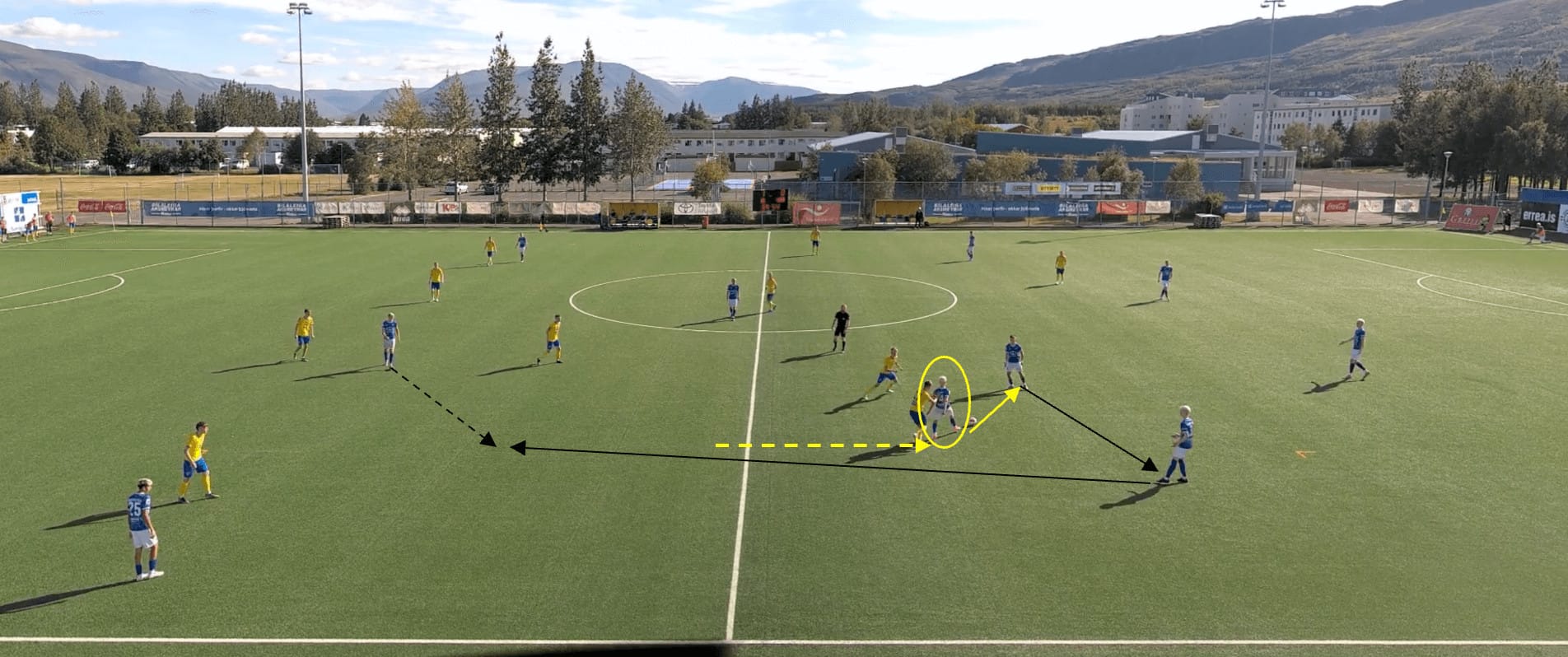
Furthermore, Vilhjálmsson is able to retain the ball incredibly well when under pressure. As we can see here, despite having no option but to go backwards, he doesn’t lose possession, and his on-the-ball abilities actually attract the opposition players towards him. Fram U19s use this to their advantage, though and often utilise the space created by so many of the opposition players being drawn to Vilhjálmsson.
Here, Vilhjálmsson retains possession and plays it back to a teammate, who plays a short pass to the Fram U19 fullback. Whilst this is happening, the Fram U19 forward moves into the space vacated by Vilhjálmsson and can receive a pass from the fullback. By retaining possession and evading opposition players, he can effectively help relieve pressure on his teammates, allowing the team to regroup and reorganise their structure.
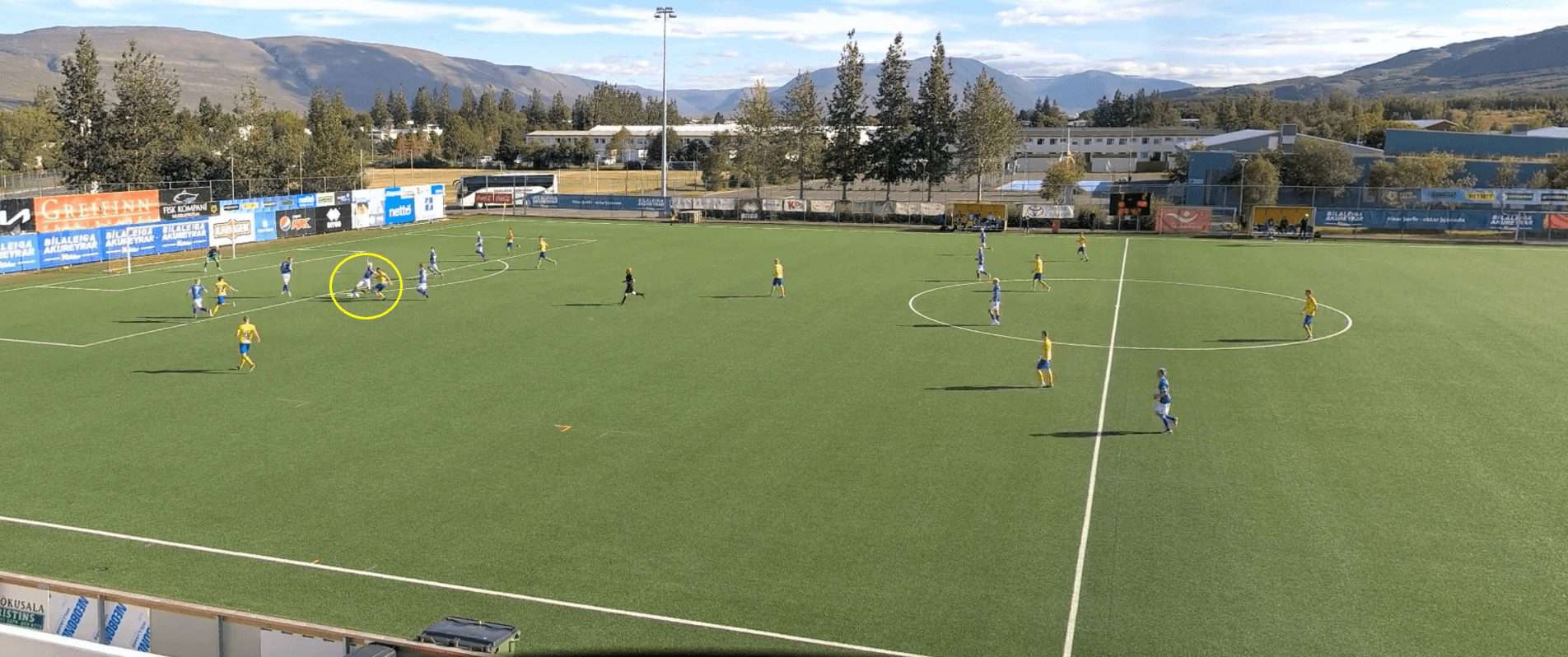
In the defensive phase, Vilhjálmsson works hard to track back and compete in the ground duels. The 19-year-old averages 1.02 ground duels per 90, winning 0.53 per 90, which is not a bad success rate. Standing at 180 cm, he is not overly tall and perhaps lacks a little physical strength, as he can sometimes be a little too easily hustled out of the way by an opponent. Aerially, Vilhjálmsson does quite well, averaging 1.19 aerial duels per 90, winning 0.65 per 90.
The midfielder uses his acceleration very well to track back in the transition from attack to defence. This is very useful as Fram U19 commit several players forward in the attacking phase, so the fact that Vilhjálmsson can cover ground quickly means that he can provide some essential defensive cover via his recovery runs and covering for players out of position.
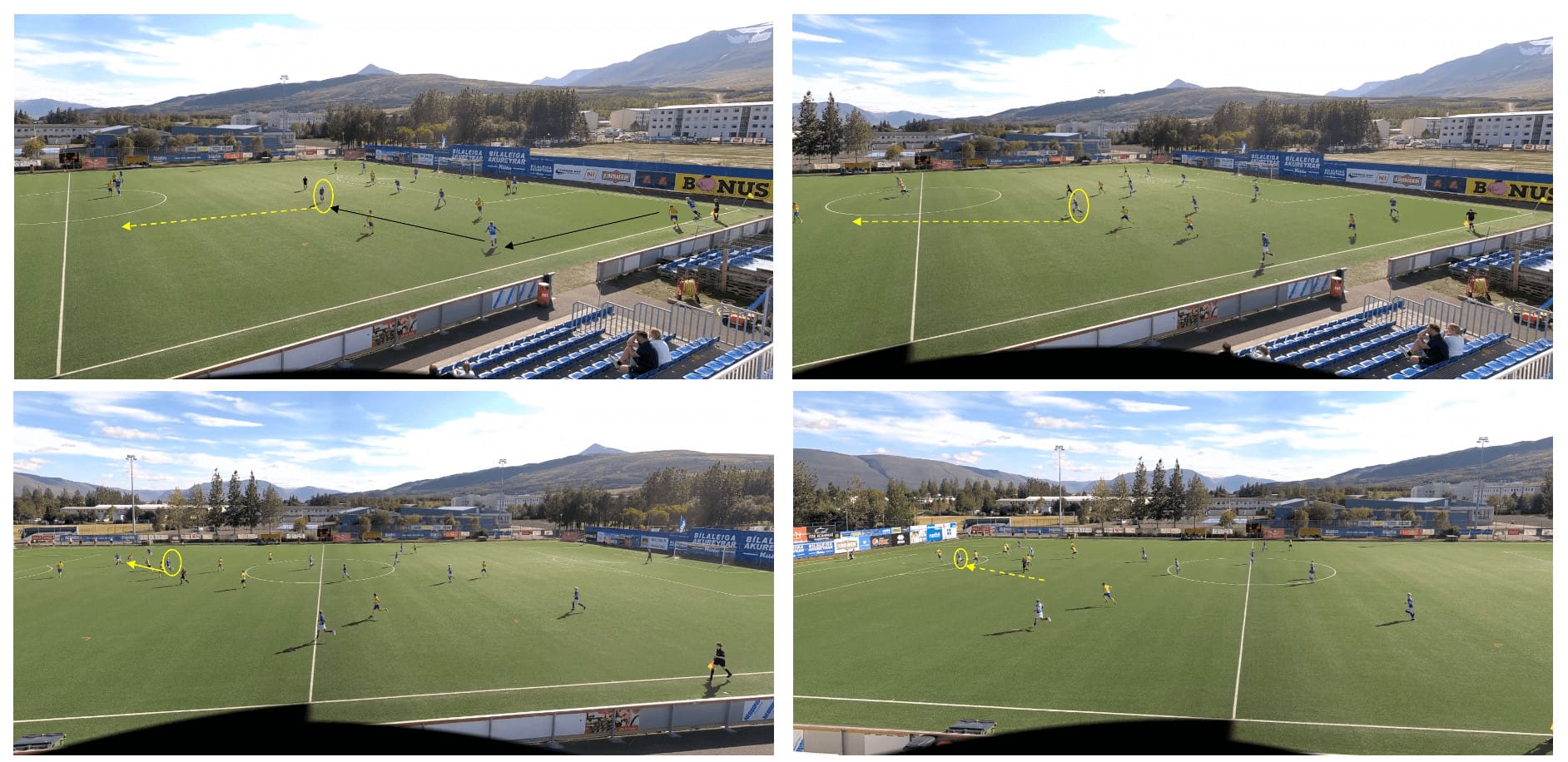
Moreover, the transition from defence to attack is often an area where Vilhjálmsson’s ball-carrying abilities are able to shine through. We can see in the example above that the attacking midfielder is the player Fram U19 turns to when looking to counterattack quickly. He carries the ball forward and successfully plays a pass to a teammate, but Vilhjálmsson doesn’t stop there; he continues his run into the penalty area, ensuring he is in a goalscoring position should he receive a pass.
His ability to carry the ball effectively through the midfield creates vital opportunities for the team to swiftly transition from defence to attack, as shown above. By bypassing opposition players, he often catches the opposing team off-guard and creates goalscoring opportunities for teammates.
Additionally, Vilhjálmsson’s proficiency in ball carrying provides an added layer of fluidity and creativity to the team’s attacking plays. He is confident when taking players on, averaging 2.3 take-ons per 90, which means he cannot only carry the ball forward but utilise his dribbling skills to beat his opponent in the 1v1s. This puts the opposing defence under constant pressure and increases the team’s chances of breaching the opposition’s defensive line.
Lúkas Magni Magnason
The second player we are going to look at in this analysis piece is KR Reykjavik’s central defender, Lúkas Magni Magnason. The 18-year-old is already on the fringes of the first team and already made a few appearances in the Besta deild karla, so there is no better time to analyse his style of play.
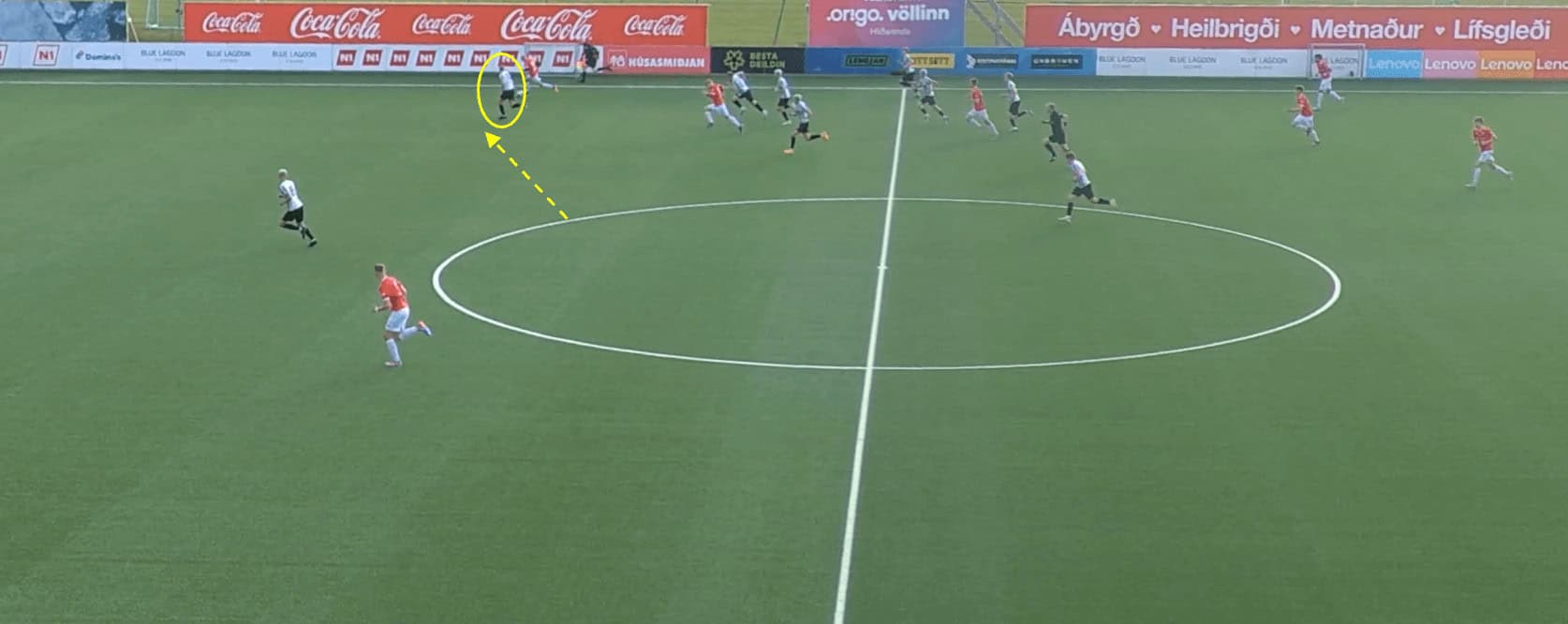
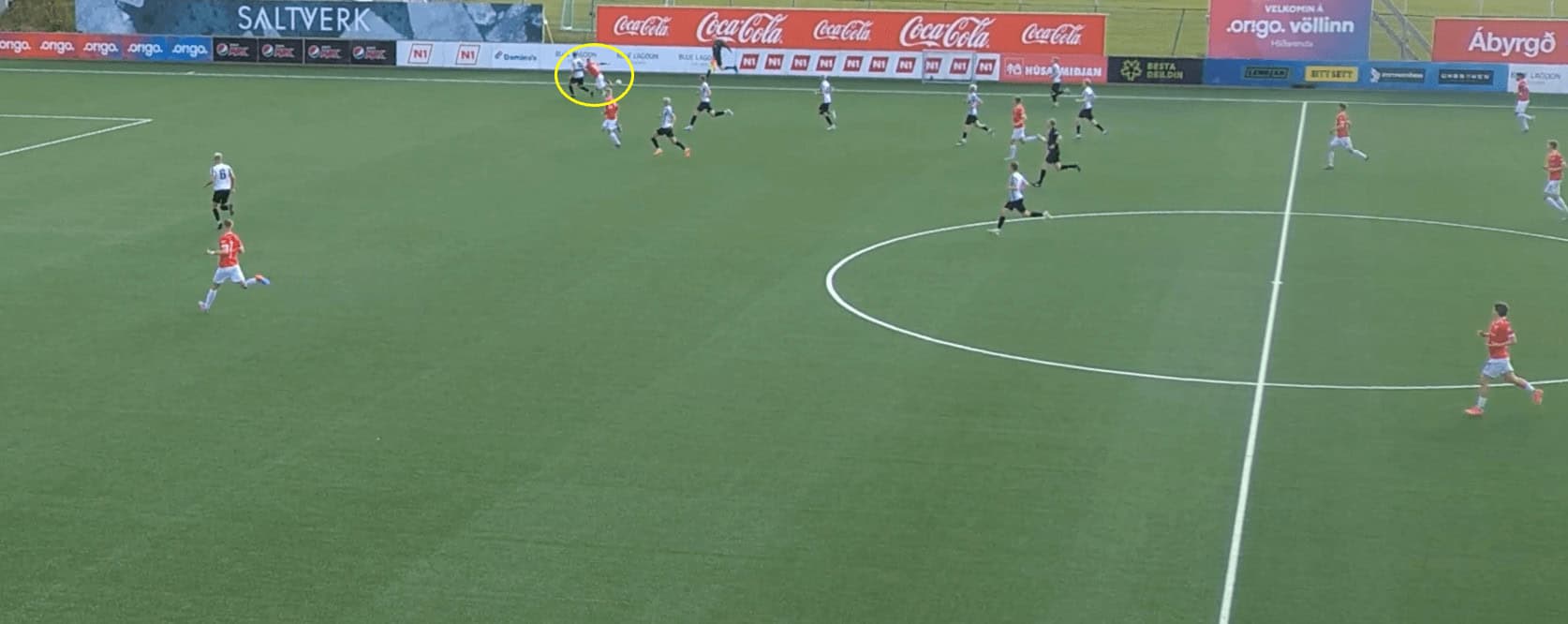
When watching Magnason, the first thing we notice is his physical profile. He has excellent physical strength and acceleration, which he frequently uses. Here, he is playing for the KR Reykjavik U19 team, who attack in great numbers, meaning the two centre-backs are often the only players left to provide defensive cover.
In this scenario, recognising the opposition are counterattacking, Magnason covers the ground quickly and gets across to the KR Reykjavik left flank. He uses his strength to outmuscle the opposition player and prevent him from carrying the ball forward. Magnason also puts the ball out of play to buy his team enough time to track back and fall into their defensive structure.
Magnason averages 1.42 ground duels per 90, winning 0.71 per 90. His excellent physical strength serves as a pivotal asset in battles with opposition forwards, allowing him to hold his ground, maintain defensive positioning, and limit the attempts by opposing players to muscle their way into goalscoring positions.
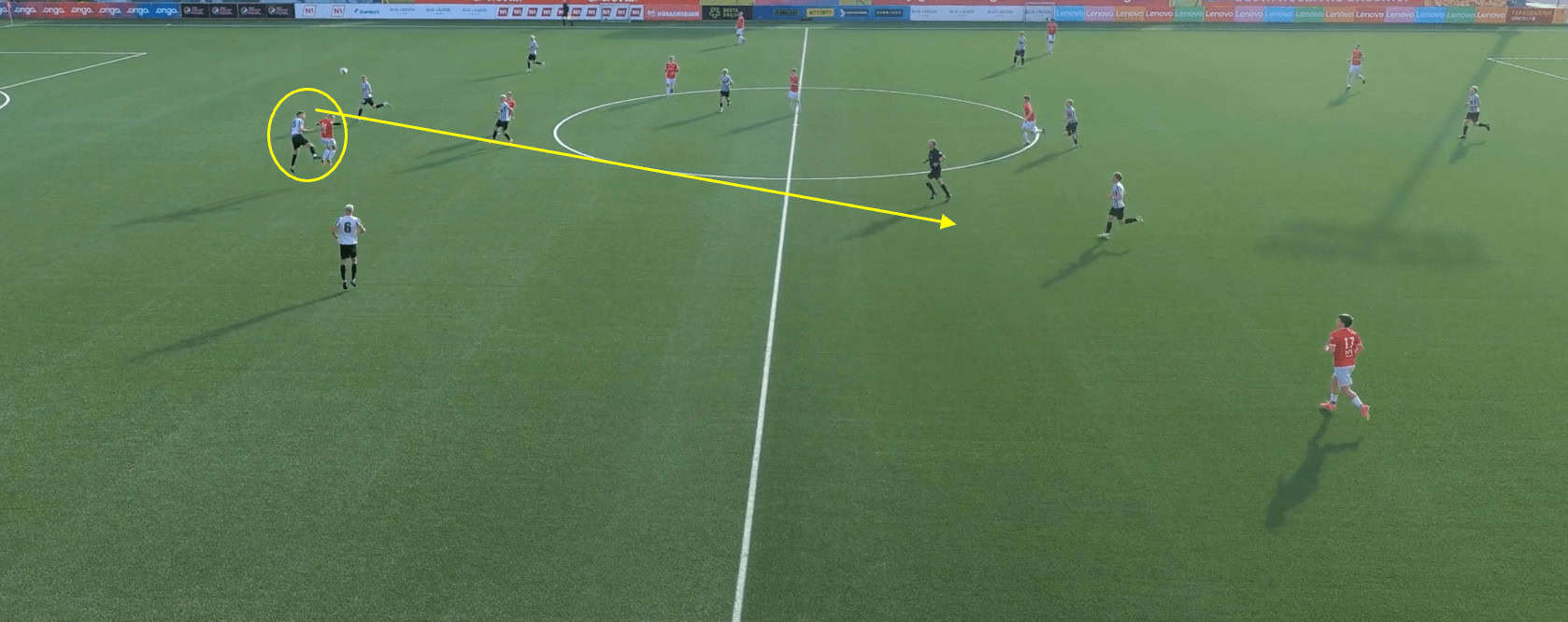
Moreover, the 18-year-old central defender is also very proficient in aerial battles, averaging 3.5 per 90 minutes. As we can see in the example above, Magnason judges the ball’s trajectory very well, enabling him to time his jump to perfection. It’s not always that he outjumps his opponent; his success in the aerial duels is very often due to this ability to read the flight of the ball so well.
Having a centre-back who is good in the air provides invaluable benefits to the team, actively bolstering the defensive line and effectively mitigating potential attacking threats. Magnason can effectively contest aerial duels and win crucial headers, which results in him limiting the opposition’s influence at set-piece plays and crosses into the box. His dominance in the air significantly reduces the likelihood of the opposing team scoring from aerial opportunities, enhancing KR Reykjavik’s defensive capabilities and minimising the risk of conceding goals.
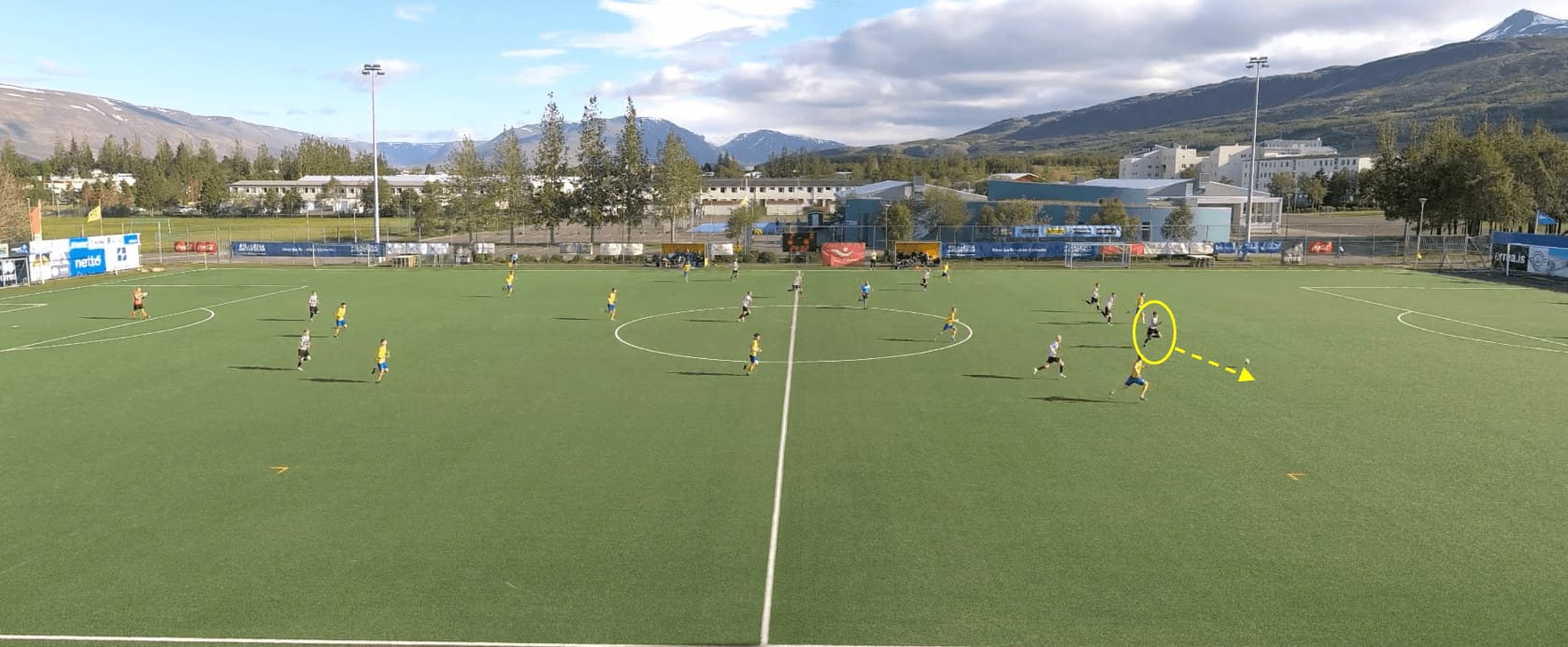
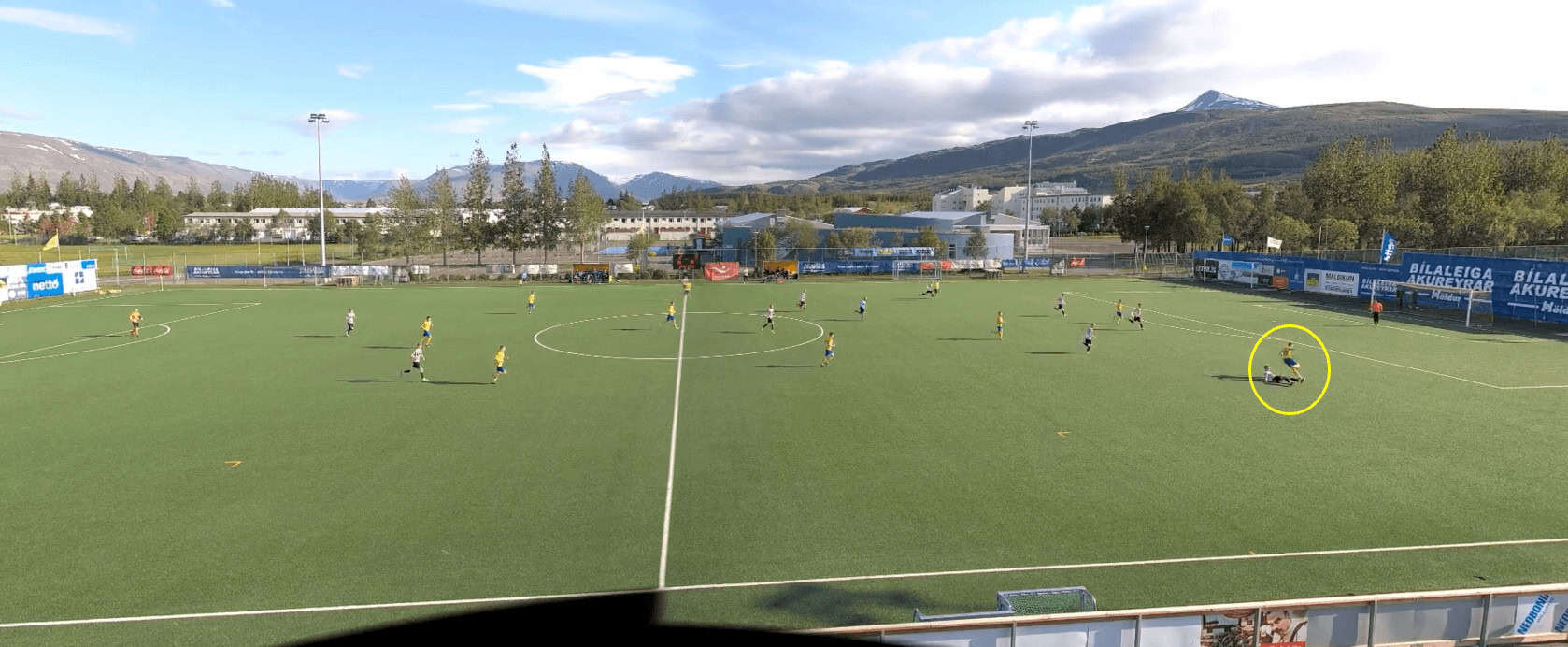
Furthermore, the central defender has excellent acceleration, allowing him to perform excellent recovery runs. In the scenario above, KR Reykjavik U19 are under pressure to quickly transition from attack to defence as their opponents are on the counterattack. Magnason then executes a perfect sliding tackle, which takes the ball away from his opponent. As KR Reykjavik U19 have a tendency to hold a high defensive line, Magnason does not shy away from a tackle, making 2.9 per 90 and winning 1.33 per 90 on average.
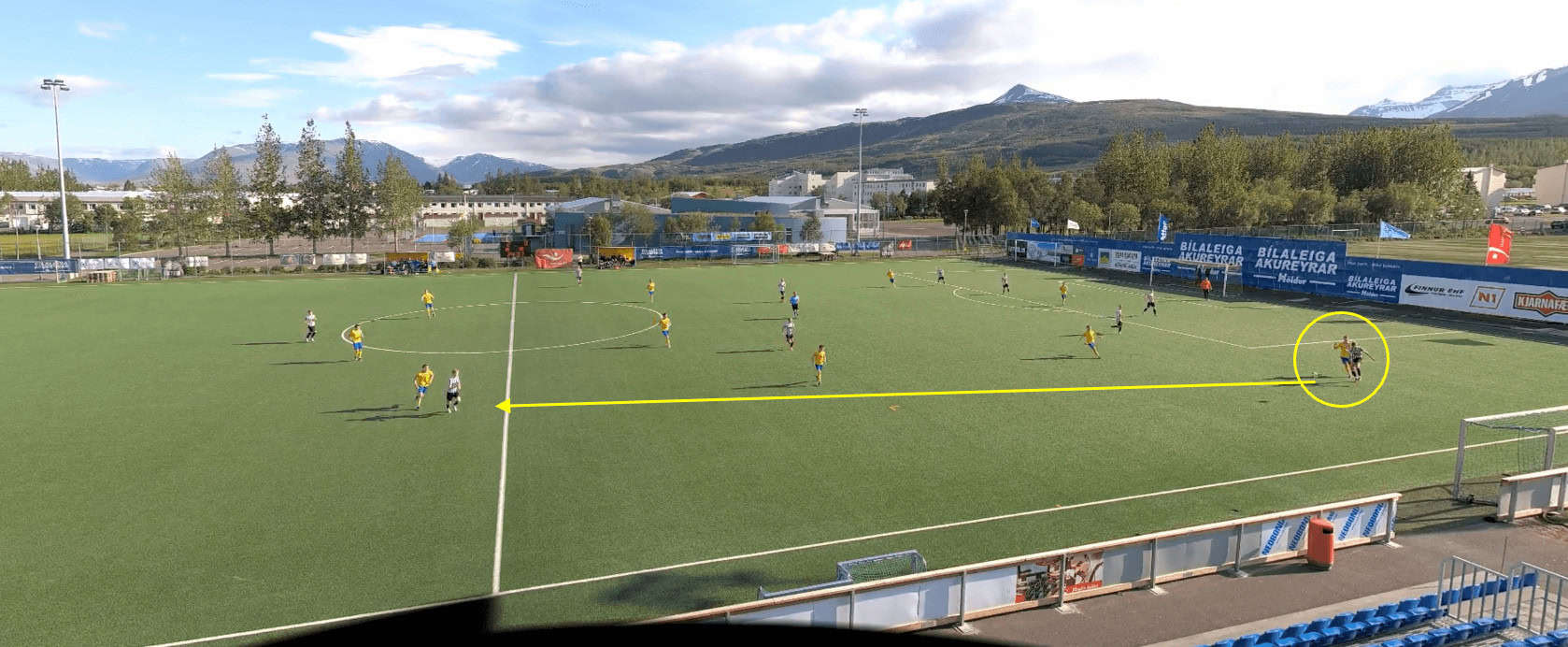
Upon winning the ball, the 18-year-old then plays a pass forward into the bath of his teammate so that KR Reykjavik can launch a counterattack themselves.
Magnason’s rapid recovery runs and defensive cover significantly bolster his team’s resilience when dealing with such counterattacks. The young defender provides crucial support to fullbacks and midfielders who are most likely out of position during the attacking phase of play. His quick thinking and brilliant execution of such manoeuvres go a long way to minimise the gaps in the defensive line, therefore ensuring a more solid and cohesive defensive structure.
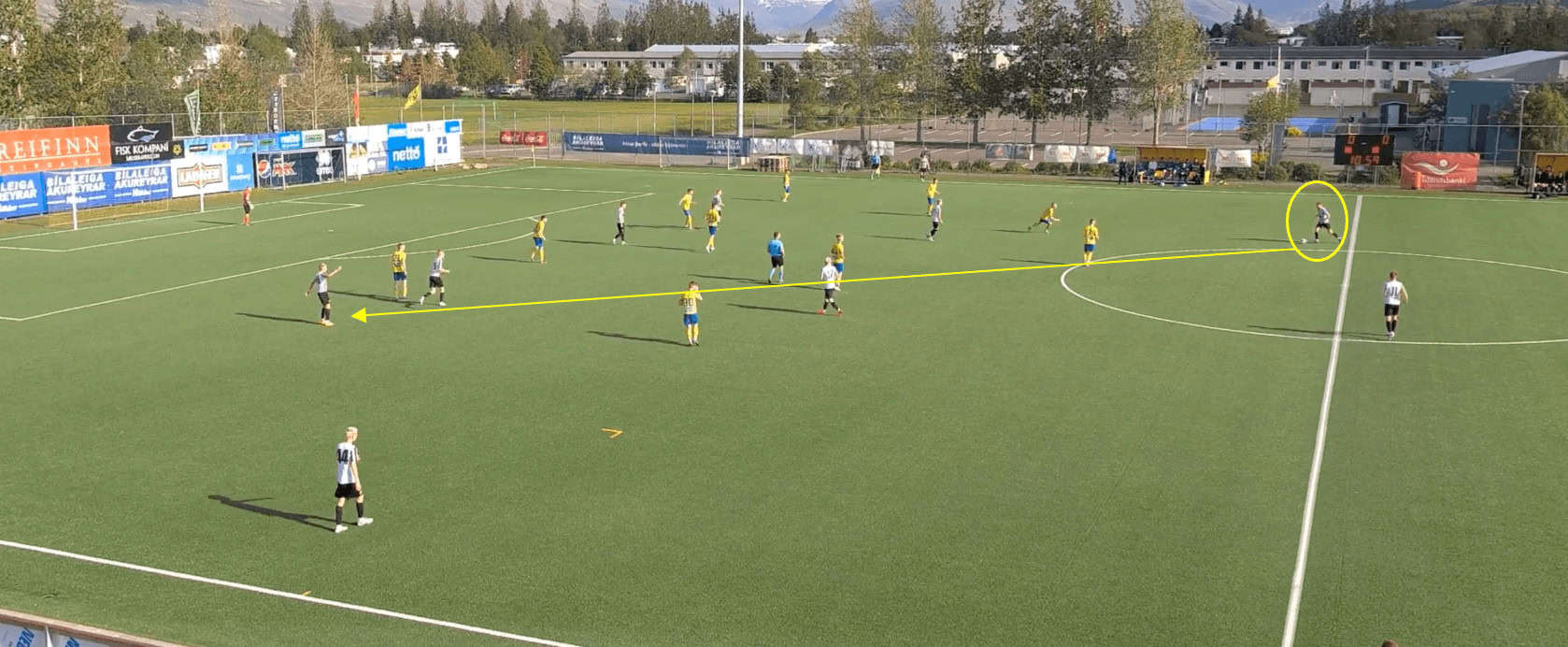
This leads us nicely into highlighting Magnason’s passing abilities as the modern-day centre-back is often expected to be able to play useful passes as the team looks to build an attack. He can play some important progressive passes, which allow the team to transition into the attacking phase very quickly. Here, he plays a long diagonal pass to the left winger. This adeptness at switching play is a valuable asset to have as it can catch the opposition off guard and mean they have to reshuffle their defensive structure.
His effectiveness when playing accurate long-range passes and initiating attacks from the backline also adds an extra dimension to the team’s offensive strategy. By distributing the ball to the midfield and/or forwards, he can instigate quick and incisive attacking plays, potentially creating goalscoring opportunities for his teammates via a single pass.
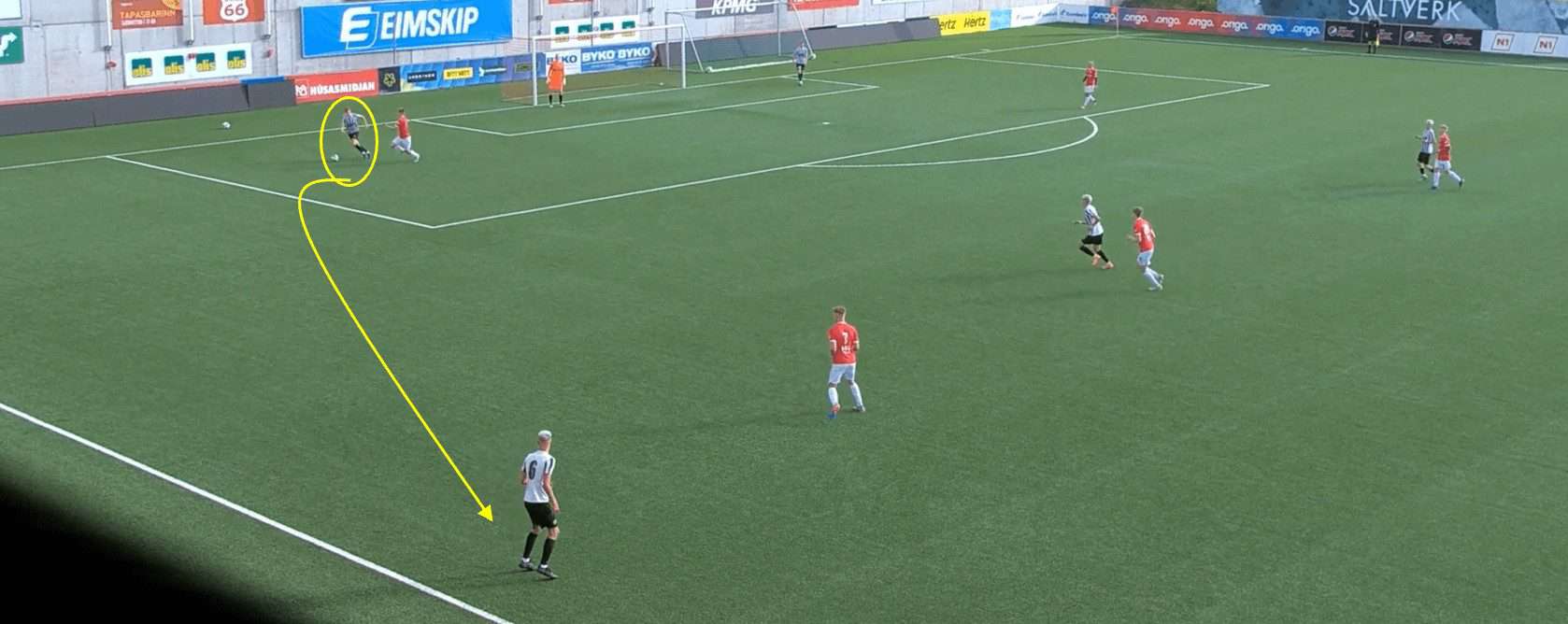
Additionally, the young defender is calm and composed when under pressure. He is able to not only retain the ball and shield it from his opponent, but Magnason then plays a pass into his teammate, who turns and has time and space to carry the ball up the flank.
By confidently manoeuvring beyond the opposition’s pressing forwards and midfielders, Magnason can successfully dictate the flow of the game and the team’s playing style. This enables KR Reykjavik to maintain possession and dominate the midfield areas, therefore establishing much more comprehensive control over the match.
Conclusion
To wrap up this scout report, we have highlighted two Icelandic players to look out for in the future. There is potentially a golden generation of talent coming through in Iceland who will most likely go on to have a huge impact on the fortunes of the National Team.
Egill Otti Vilhjálmsson is a talented midfielder at Fram who could break through into the first team sooner rather than later. We have seen how the 19-year-old utilises his excellent off-the-ball movement to create space for others and how he can retain possession even when under immense pressure from the opposition. Not forgetting to mention his eye for goal. The young midfielder looks like he could be an excellent prospect for the future.
We have also seen how Lúkas Magni Magnason could become one of Iceland’s most important centre-backs in the future. He is already making a name for himself in the Besta deild karla, and it’s easy to see why with his brilliant defensive displays and calmness in possession. He is undoubtedly one to look out for.





Comments